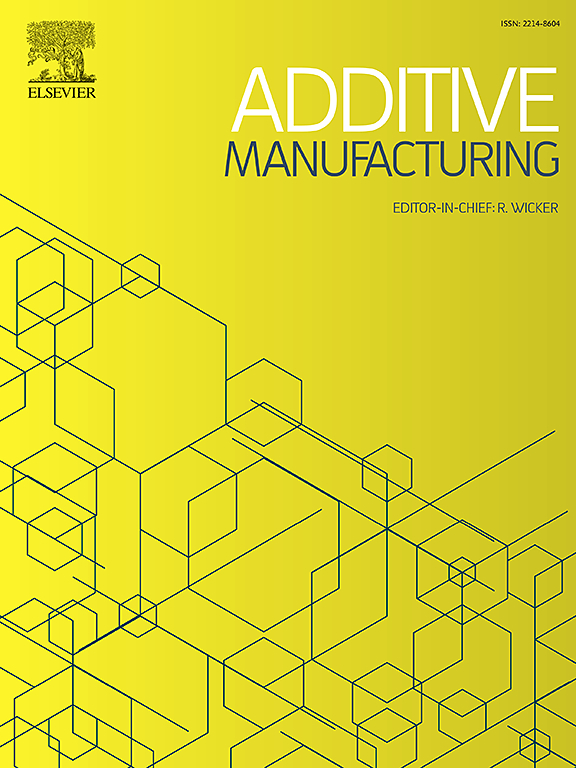In-situ controller autotuning by Bayesian optimization for closed-loop feedback control of laser powder bed fusion process
IF 10.3
1区 工程技术
Q1 ENGINEERING, MANUFACTURING
引用次数: 0
Abstract
Laser powder bed fusion (LPBF) additive manufacturing (AM) traditionally relies on static parameter assignment in an open loop, which can lead to defects when faced with complex thermal histories and process variability. Closed-loop control offers a promising alternative that can enhance stability and mitigate defects. However, controller performance relies heavily on precise parameter tuning, a process that is typically manual and system-specific. This study employs Bayesian Optimization (BO) as an automated, sample-efficient method for tuning in-layer controllers in LPBF, leveraging the repetitive nature of the process for either online (in-process) or offline (pre-process) tuning. We experimentally apply BO to tune an in-layer PI controller to modulate laser power, assessing its performance on wedge geometries prone to overheating. The results show that BO significantly reduces overheating, outperforming uncontrolled settings. Notably, this study presents the first microstructural analysis of parts produced with in-layer controlled tuning, identifying lack-of-fusion porosities caused by the controller’s corrective adjustments. In summary, BO demonstrates strong potential for automated controller tuning in LPBF, with implications for broader applications in AM, suggesting a path towards more adaptive and robust control across diverse machines and materials.
基于贝叶斯优化的原位控制器自整定用于激光粉末床熔合过程闭环反馈控制
激光粉末床熔融(LPBF)增材制造(AM)传统上依赖于开环中的静态参数分配,当面对复杂的热历史和工艺变异性时,这可能导致缺陷。闭环控制提供了一种有希望的替代方案,可以增强稳定性并减少缺陷。然而,控制器的性能在很大程度上依赖于精确的参数调整,这是一个典型的手动和系统特定的过程。本研究采用贝叶斯优化(BO)作为LPBF中调整层内控制器的自动化,采样效率高的方法,利用过程的重复性进行在线(进程中)或离线(预处理)调整。我们实验应用BO来调整层内PI控制器来调制激光功率,评估其在容易过热的楔形几何形状上的性能。结果表明,BO显着减少过热,优于非受控设置。值得注意的是,本研究首次对层内控制调谐生产的零件进行了微观结构分析,确定了由控制器的校正调整引起的缺乏融合的孔隙。总之,BO显示了在LPBF中自动控制器调谐的强大潜力,这对AM中的更广泛应用具有影响,表明了在不同机器和材料中实现更具适应性和鲁棒性控制的途径。
本文章由计算机程序翻译,如有差异,请以英文原文为准。
求助全文
约1分钟内获得全文
求助全文
来源期刊

Additive manufacturing
Materials Science-General Materials Science
CiteScore
19.80
自引率
12.70%
发文量
648
审稿时长
35 days
期刊介绍:
Additive Manufacturing stands as a peer-reviewed journal dedicated to delivering high-quality research papers and reviews in the field of additive manufacturing, serving both academia and industry leaders. The journal's objective is to recognize the innovative essence of additive manufacturing and its diverse applications, providing a comprehensive overview of current developments and future prospects.
The transformative potential of additive manufacturing technologies in product design and manufacturing is poised to disrupt traditional approaches. In response to this paradigm shift, a distinctive and comprehensive publication outlet was essential. Additive Manufacturing fulfills this need, offering a platform for engineers, materials scientists, and practitioners across academia and various industries to document and share innovations in these evolving technologies.
 求助内容:
求助内容: 应助结果提醒方式:
应助结果提醒方式:


